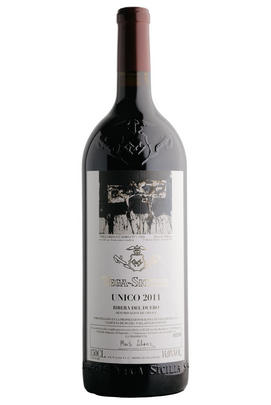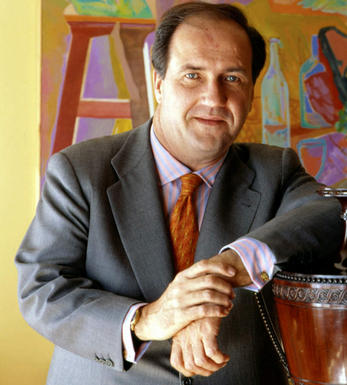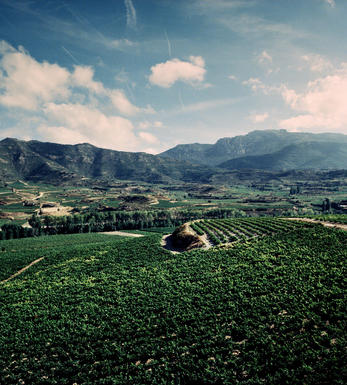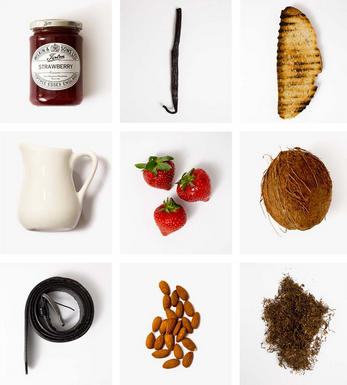
2011 Único, Vega Sicilia, Ribera del Duero, Spain

Critics reviews
Deep, shimmering ruby. An intensely perfumed bouquet evokes ripe black and blue fruits, vanilla, pipe tobacco, exotic spices, cola and potpourri. Deeply concentrated and energetic on the palate, it offers smoke-laced black currant, cherry liqueur, spice cake, and mocha flavours that display outstanding clarity and pick up a candied violet nuance on the back half. Polished, steadily building tannins frame the finish, which hangs on with outstanding mineral- and floral-driven tenacity.
Drink 2025 - 2036
Josh Raynolds, Vinous.com (June 2021)
95% Tinto Fino, 5% Cabernet Sauvignon.
Frost-free spring, warm but regular growing season and ‘excellent’ vintage conditions; harvest 15–28 September. Bottled June 2017: 88,288 bottles, 3,505 magnums, 318 double magnums, 60 Impériales and 3 Salmanazars. From magnum.
Mellow nose and on the palate, there’s a sensation rather akin to chewing charcoal—hums along on the finish. Like the 2013, this is very much a wine for the future. Lots of fine tannins.
Drink 2025 - 2050
Jancis Robinson MW, JancisRobinson.com (September 2022)
The 2011 Único ended up among my least favourite vintages of recent times, at least the magnum I tasted and in comparison with the 2013 and 2009 and even the 2007 (a very challenging vintage that showed better). Despite the warm year (which they have always said they found cooler than 2010), the wine is "only" 14% alcohol, which is quite moderate for the last few years when the wines routinely reach 14.5%. I found the wine quite tannic and lacking the charm I expected in this cuvée. Perhaps with more time?
The grapes were picked relatively early, between September 15th and 28th. 3,505 magnums were filled in June 2017.
Drink now until 2033
Luis Gutiérrez, Wine Advocate (January 2023)
95% Tempranillo and 5% Cabernet Sauvignon.
Intensity and concentration mark this, with a deep core of hazelnuts, ripe blackberries, praline, chocolate orange and some iron. It’s full-bodied with very finely textured yet muscular tannins. Well framed. Tasted from magnum.
Drinkable now, but with a long future ahead.
James Suckling, JamesSuckling.com (September 2022)
Vibrant primary aromas of roses, oranges and fresh herbs lead into a wine full of redcurrant freshness. While 2011 is a more concentrated vintage, the wine is impressively elegant and delicate. It can be enjoyed soon for its structure, yet it will undoubtedly improve with age.
Drink 2025 - 2045
Sarah Jane Evans MW, Decanter.com (September 2022)
About this WINE

Vega Sicilia
Vega Sicilia, Spain's “first growth” and most prestigious wine estate, is located in Ribera del Duero. It was founded in 1864 by Don Eloy Lecanda y Chaves, who arrived from Bordeaux with cuttings of local grapes (Cabernet Sauvignon, Merlot and Malbec) and planted them, together with Spain’s signature grape Tinto Fino (aka Tempranillo) in the arid Ribera soils.
The winery begun building its formidable reputation after 1903 under the ownership of Antonio Herrero, winning a number of awards at home and overseas. The estate changed hands several more times before its acquisition by the current owners, the Álvarez family, in 1982.
The estate’s success is founded on its meticulous approach. In the vineyard it applies low yields, aided by green harvesting and painstaking selection at harvest. In the winery, wines are aged in any number of receptacles – using French and American, new and old oak, small barrels or huge vats – to engender further complexity. Despite prolonged barrel ageing, the fruit is never dried out or overly oaky – compelling evidence of the superb quality of its raw materials.
The Vega Sicilia range includes three cuvées: Único (literally translating as “unique”) is the flagship, followed by Único Reserva Especial (a multi-vintage blend) and their “entry-level” offering Valbuena 5° (an expression of Tinto Fino aged for five years, hence the “5°”). The top two wines are a blend of Tinto Fino with a small percentage of Cabernet Sauvignon and/or Merlot, depending on the vintage. They are both aged for approximately 10 years prior to release, normally spending six of those in barrel and three in bottle.
This illustrious property laid the founding stone for Ribera del Duero, which is now acknowledged to be one of the best wine regions in Spain.
Vega Sicilia has now built up a portfolio which includes Bodegas Alion (providing a more modern expression of Ribera del Duero), Bodegas Pintia (in the emerging region Toro), Macán (a partnership with Benjamin de Rothschild) and the Hungarian Tokaji estate, Oremus.

Ribera del Duero
In the last 30 years, Ribera del Duero has emerged from almost nowhere to challenge Rioja for the crown of Spain's greatest wine region. Once known only as the home of Vega Sicilia it now boasts numerous bodegas of outstanding quality like Cillar de Silos, Alión and Hacienda Monasterio. Ribera del Duero was granted its DO status in 1982, at a time when only nine bodegas were operating there, yet today it has over 200 wineries and more than 20,000 hectares of vines. Most of Ribera del Duero's production is red, with only a modest quantity of rosado produced. No white wines are allowed under the DO.
Ribera del Duero owes its success to a combination of factors: firstly, its terroir of schistous sub-soil bears remarkable similarity to other famous winemaking regions such as the Douro and Priorat. Secondly, its microclimate, with its high altitude, hot days and cool nights (a phenomenon known as “diurnal variation”), ensures ripeness while preserving the vivacity of the fruit, aromatic flavours and refreshing acidity.
Thirdly, it has been blessed with an exceptional native grape, Tempranillo (also known as Tinto del País or Tinto Fino). This yields superb, complex red wines that are delicious when young but which also have the capacity to age into magnificent Gran Reservas. Finally, the immense influence of its winemakers has been key – historically, of course, Vega Sicilia, but more recently Peter Sisseck (Hacienda Monasterio) and the indefatigable Aragón family of Cillar de Silos.
The same DO rules govern Ribera's barrel-aged styles as for Rioja: Crianzas are aged for two years before release with at least a year in oak barrels; Reservas must be three years old with at least a year spent in oak; and, finally, Gran Reservas must be five years old before going on sale, with two years spent in barrel. The young (joven) unoaked red wines, called Roble, tend to boast a moreish, vibrant, bramble fruit while the best oak-aged styles of Crianza, Reserva and Gran Reserva show intense, generous fruit, overlaid with notes of vanilla and sweet spice, and wrapped up in polished, elegant tannins.
Recommended producers: Vega Sicilia (including Alión), Cillar de Silos, Hacienda Monasterio

Tempranillo/Tinto Fino
A high quality red wine grape that is grown all over Spain except in the hot South - it is known as Tinto Fino in Ribera del Duero, Cencibel in La Mancha and Valdepenas and Ull de Llebre in Catalonia. Its spiritual home is in Rioja and Navarra where it constitutes around 70% of most red blends.
Tempranillo-based wines tend to have a spicy, herbal, tobacco-like character accompanied by ripe strawberry and red cherry fruits. It produces fresh, vibrantly fruit driven "jovenes" meant for drinking young. However Tempranillo really comes into its own when oak aged, as with the top Riojas where its flavours seem to harmonise perfectly with both French and American oak, producing rich, powerful and concentrated wines which can be extraordinarily long-lived.
In Ribera del Duero it generally sees less oak - the exception being Vega Sicilia where it is blended with Cabernet Sauvignon and Merlot and then aged for an astonishing 7 years in oak and is unquestionably one of the world`s greatest wines.


Buying options
Add to wishlist
Description
The youthful, red brick colour of the 2011 Único immediately suggests that this is still a mere infant, even at ten years of age. Aromas of strawberries, autumnal leaves and fresh saddle leather mingle with darker notes of bramble fruit and a hint of blackcurrants, sweet spice and dried camomile flowers. The palate is lean and tight; there is generosity evident with more maturing notes of sweeter strawberries, leather and cured meat in the background, but these will need time to shine through.
The tannins are excellent, pin-prick and almost imperceptible at first; however, the lightest of grips on the palate increases with tasting, and the tannins are very clearly present on the finish. This is a very subtle but incredibly beautiful Único, about lightness of touch and a perfect representation of its terroir over anything else. It feels like the light itself, with pure energy and such delicate characteristics that they almost evade one's grasp at this stage. However, that superb, understated yet intense, deep core of flavour on the endless finish makes it truly spectacular.
Drink 2025 - 2055
Catriona Felstead MW, Senior Buyer, Berry Bros. & Rudd
wine at a glance
Delivery and quality guarantee